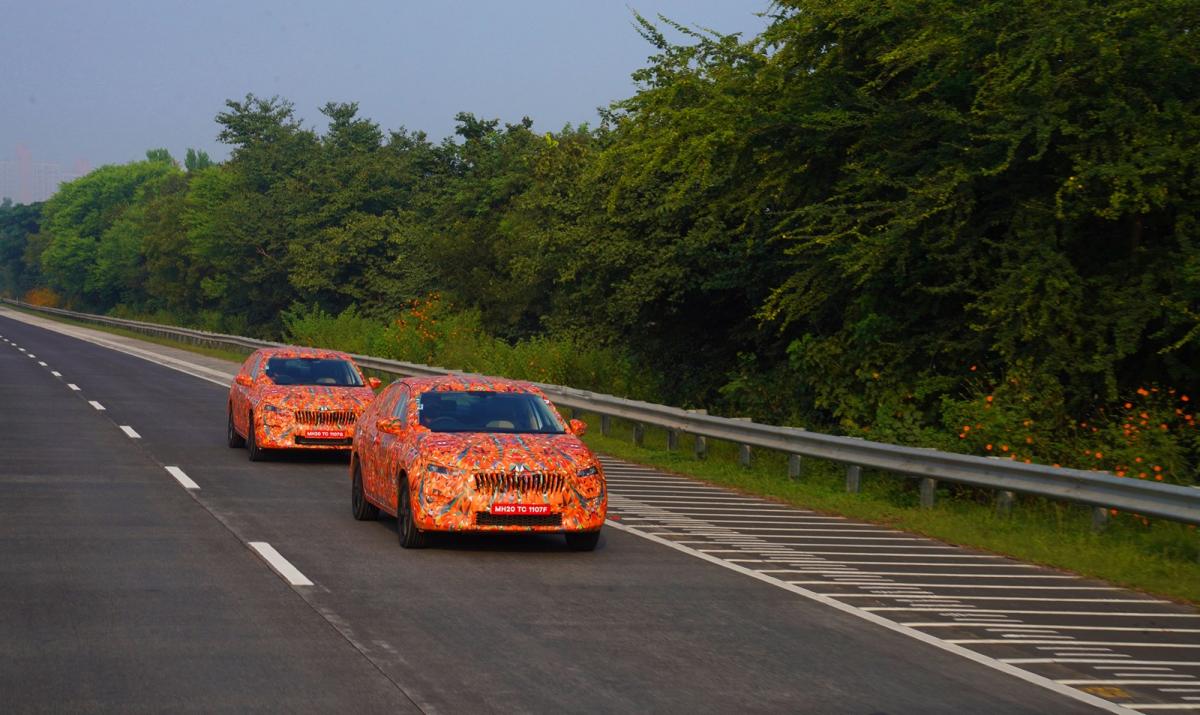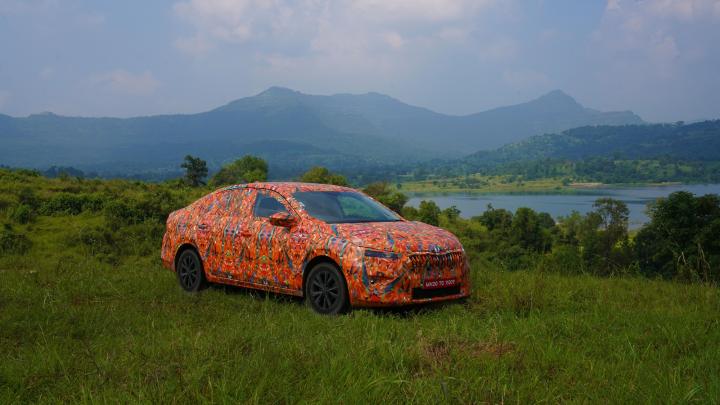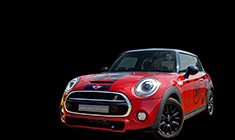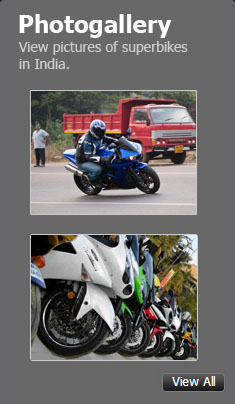News
Skoda Slavia First Drive & Preview
This Slavia has been developed by Skoda India's engineers in collaboration with a global team. The sedan will be built in India, for India and some other markets.

Most of the segments in the Indian car market are now dominated by crossovers & SUVs, while sedans have been forced to play second fiddle. The Skoda-VW group is enhancing its presence in that body style with the Kushaq, Taigun, Tiguan, Kodiaq (2.0 TSI petrol expected soon) & more. But the group does remain a believer of sedans, with the Octavia & Superb both being continuously updated in segments where other brands have given up. Skoda believes the midsize premium sedan market will grow by 138% from 2021-31. That's why the company is gearing up to introduce an all-new sedan in 2022. Called the Slavia, this car will be the company's second offering under its India 2.0 project. Interestingly, the name Slavia has been taken from the bicycle brand that Laurin and Klement introduced in 1896, just a year after the 'Laurin & Klement' company was founded.

The Slavia will be based on the same MQB-A0-IN platform that underpins the Kushaq. This car has been developed by Skoda India's engineers in collaboration with a global team. The sedan will be built in India, for India and some other markets. The company aims to attain up to 95% localisation to keep its price competitive. Team-BHP was invited for a sneak peek of the Slavia, which was completely camouflaged during our drive.


The Slavia measures 4541 mm in length, 1752 mm in width and 1487 mm in height, with a wheelbase of 2651 mm. This makes it larger than the 1st-gen Octavia! It will be available with a choice of two turbocharged petrol (TSI) engines - the familiar 1.0L and 1.5L. Both engines will be available with a 6-speed manual gearbox. While the former will also get a 6-speed torque converter AT, the latter will be available with the 7-speed DQ200 DSG AT. The 1.5L engine will also get active cylinder technology (like the Kushaq), which shuts down 2 cylinders when the engine load is low, to enhance fuel efficiency.


On the safety front, the Slavia will be equipped with 6 airbags and numerous assistance systems. Skoda claims that the car's safety systems have not only been tested for generic crash tests like homologation and the GNCAP @ 64 km/h front deformable barrier, but are also designed and tested to work in crash scenarios based on internal VW standards. The side and curtain airbags have been designed to meet a crash scenario of side pole crash, which is higher than GNCAP standards. The curtain airbags offer head protection to the front as well as rear passengers. The Slavia has been designed to meet European pedestrian safety norms. Currently, the Indian regulatory requirements only mandate protection for lower leg & head impact; the Slavia will reduce upper leg injuries too.


The camouflage for the covered Slavia was styled by Shreyas Karambelkar. More than 200 motifs were submitted to Skoda India as part of a competition and 5 of these were selected for the final round. Shreyas gets a trip to Prague and a meeting with Oliver Stefani - Head of Skoda Design.
The exteriors and interiors of the Slavia were covered and according to an embargo, we cannot comment on them. What we can tell you, however, is how the car drives.
Skoda has given the Slavia the same engines as its crossover sibling, the Kushaq. Which means it is powered by the very familiar 1.0L and 1.5L TSI motors. While both engines come mated to a 6-speed manual transmission, the 1.0 TSI will also get a 6-speed torque converter AT, while the 1.5 TSI will be available with a 7-speed DSG AT.
The Skoda Slavia 1.5L Turbo Petrol MT
The 1.5L turbo-petrol engine makes 148 BHP, which is identical to the Kushaq. This figure easily makes it the most powerful car in its segment. However, it is yet to be homologated and final power and torque figures will be announced at a later date. Like the Kushaq, the 1.5 TSI is mated to a 6-speed MT.
Our test drive was in the form of a convoy on a pre-determined route with prescribed speed limits. Low-end torque is satisfactory and we can even cruise within city limits in higher gears. The engine pulls well from low revs and downshifts aren't required frequently. However, an important point to keep in mind is if you let the revs drop too low at crawling speeds or over speed breakers, the engine will just abruptly stall! When it stalls though, all you need to do is press the clutch pedal all the way in and the engine fires back up.
Out on the open road, the power on tap makes the 1.5 TSI a fast performer and a whole lot of fun. The engine is more mature than the 1.0L in its power delivery. Even torque steer is extremely well-controlled for a 148 BHP FWD car. The 1.5L TSI is very tractable and pulls cleanly. To overtake, just drop a gear and floor it...the strong mid-range will ensure you fly past the slower vehicle. The engine revs in a linear fashion till ~6,500 rpm. In terms of cruisability, the Slavia can do 100 km/h in 6th gear with the engine spinning at ~2,000 rpm.
The 6-speed MT is slick with short throws for the most part. However, slotting the lever in 1st did take some getting used to as the gate was not very well defined. Additionally, the clutch is quite springy and you need to carefully modulate it in stop-and-go traffic. Its travel range is longer than we'd like too. This trait of the clutch gets irritating in bumper to bumper traffic.
The Skoda Slavia 1.5L Turbo Petrol DSG AT
The Slavia 1.5 TSI will be available with an optional DSG automatic transmission. The combo makes it an effortless cross-country mile-muncher. This is the notoriously unreliable DQ200 though, so we remain very concerned about its long-term reliability.
Slot into D mode, take your foot off the brake pedal and the Slavia DSG slowly creeps forward - a boon in heavy traffic conditions where you can drive with just the brake pedal. With a light foot, the gearbox moves up the ratios pretty quickly. Impressively, you won't feel these shifts as the transition is butter smooth. The automatic transmission makes the car very easy to drive in the city. The 1.5 motor's healthy bottom-end helps you get around effortlessly. Throttle response is good. Add to that, the direct injection and turbocharger ensure that the engine isn't lethargic at any speed. There's always enough power on tap to accelerate or overtake quickly.
Out on the highway is when things go from good to great! Outright performance is excellent and the strong mid-range takes care of all the overtaking you need to do. Downshifts are quick (not as fast as upshifts though) and the gearbox responds well to throttle inputs. The 7th ratio gives the Slavia DSG long legs on the highway. It will happily cruise at 100 km/h with the tachometer reading a lazy 1,800 rpm. In summary, the 1.5 TSI DSG is a jewel of a combination that will keep you happy at low revs & high, and in the city as well as on the highway.
Tap the left paddle for a downshift and manual mode is engaged. The ECU blips the throttle to match revs and holds the gear till near the redline. This gets addictive, especially during overtakes! However, even in manual mode, the DSG will upshift above ~6,000 rpm and also downshift below ~1,000 rpm. We feel this is way too conservative - the MT revs to ~6,500 rpm! Manual mode will also ignore wrong gear selections which put the engine out of the above rpm ranges. That said, it allows you to shift down at a reasonable 3,500 rpm and use engine braking when you want. Long hold the paddles to revert back to auto mode.
Cruising around in D mode, one won't even notice the gears being shifted. They are damn smooth. The kickdown response time is quick enough and you will never feel that the gearbox is hunting for gears either. It's in the right ratio almost all the time. When you are in the mood to drive the car aggressively, engage 'Sport' mode. In S, the gearbox downshifts to keep the car in the powerband, holds the ratios longer and lets the punchy mid-range do all the heavy lifting required. Whenever you are looking to have some fun, the "S" mode will keep you happy; the DSG is awesome in sport mode.
The 1.5 TSI is reasonably quiet and sounds good most of the time. Only when revved hard does it get boomy. There are no vibrations or body shakes felt on startup or shut down. However, as you drive along, you will feel some vibrations on the centre armrest.
The Skoda Slavia 1.0L Turbo Petrol MT
The Slavia’s 1.0 TSI engine makes an identical 113 BHP as the Kushaq. This makes it more powerful than the Rapid, which it replaces. Despite the extra power though, the engine does not feel as explosive as the Rapid’s. It’s a lot more mature in the way it delivers power. This makes it less jerky as well.
The 1.0 TSI is quite tractable and because of its less explosive nature, it is easier to manage in urban traffic. Low-end torque is satisfactory. The car passed our 2nd gear speed breaker test without much effort.
On the open road, the 1.0 TSI feels quick. But it’s distinctly slower than the 1.5 TSI. Even so, I got the feeling that there was always enough power on tap to make it a sporty performer. The motor revs to ~6,700 rpm at which point it bounces off the rev limiter. The car can cruise at 100 km/h in 6th gear with the tachometer reading ~2,200 rpm.
The 6-speed manual gearbox is nice and slick with well-defined gates. Slotting into any gear is easy. The clutch has medium weight, although its travel is on the longer side.
The Skoda Slavia 1.0L Turbo Petrol AT
The 1.0 TSI engine is also available with a 6-speed torque converter gearbox (might be more reliable than the notorious DQ200 DSG). This engine and gearbox combination makes the Slavia an easy car to manage in the city. The gearbox shifts up very smoothly when driven with a light foot. Turbo lag is well masked by the torque converter and you’ll always have sufficient power at your disposal to execute quick overtakes.
On the open road, the 1.0 TSI is an eager performer. Foot hard down, it revs till ~6,000 rpm before shifting up. The gearbox is responsive enough and shifts down quickly, though not as fast as the DSG. Even so, most users won't find any reason to complain. This is a very competent transmission. During my short drive, it usually chose the right cog and never got confused.
The 6-speed AT comes with an "S" mode which holds the revs longer and keeps the engine in the punchy mid-range. There’s an "M" mode as well which is activated by using the paddle shifters. The engine revs to ~6,500 rpm in this mode. Like the DSG, it allows downshifting at revs in excess of 3000 rpm, which is good news for enthusiasts.
All versions of the Slavia get an idling start/stop system, which should help their fuel efficiency.
Coming to NVH, there are no vibrations or body shake felt on startup or shutdown, or even when idling. On the move, some vibrations are felt on the pedals and the centre armrest, particularly of the MT. Besides, there is a buzz felt on the gear lever and through the seat as well.
As expected, the 1.0 engine is definitely noisier compared to the 1.5 TSI. The typical 3-cylinder thrum is obvious on revving. While wind noise is non-existent at 100 km/h, road noise is fairly prominent.
Ride & Handling
What we drove were prototypes & Skoda is yet to finetune the suspension of the Slavia. The cars we drove did not have their final suspension settings dialled in and because of this, the ride quality on all the cars varied! Overall though, I can say that the suspension is like European cars - on the firmer side, but not stiff. While three of the cars I drove had a compliant low-speed ride, one felt more jiggly. Small to medium size bumps were handled with aplomb, but a large one did make its presence felt inside the cabin. At higher speeds, the ride gets better (as is usually the case with European cars). Even rough roads did not pose a problem for the Slavia’s suspension.
As this was a convoy drive, we didn’t exceed 100 km/h. Stability at 100 km/h is impressive. Road undulations and bumps don't affect the car’s composure.
Coming to handling, the Slavia has a lower centre of gravity than the Kushaq. The car can change direction very quickly, without a problem. Body roll through corners is kept well in check. We didn’t push the car hard through curvy sections and at these speeds, the tyres coped well and didn’t squeal at any point in time.
The steering is one finger-light at standstill and parking speeds, which the mass market will appreciate. At higher speeds, it does weigh up, but not as much as an enthusiast would like.
Braking
As it was a convoy drive, hard braking tests were out of the question. The brakes seemed to be well-calibrated and powerful enough to stop the car from 100 km/h in quick time.



















